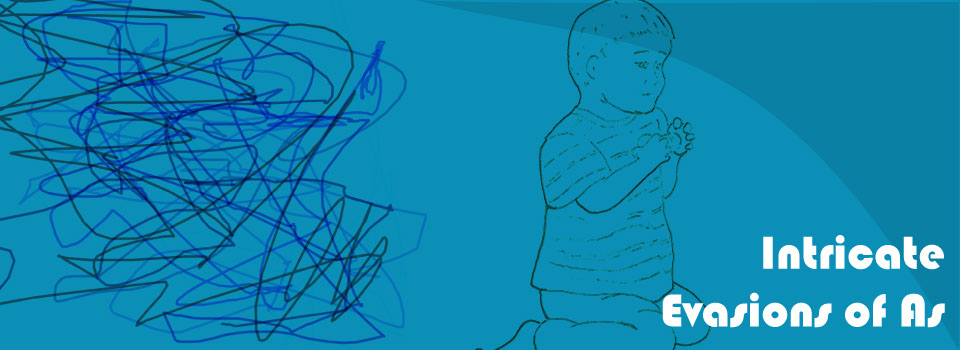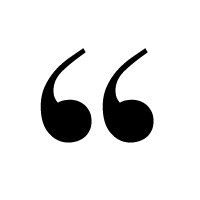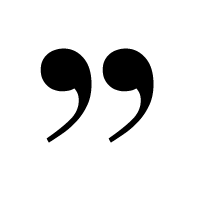
x
Contents
Home
Home
Home

Nonsymbolic Discourse
In my department, I’ve often heard colleagues say different versions of, “Derrida never said anything Burke didn’t already say better.” I’ve heard the phrase attributed to Andrea Lunsford, Barbara Biesecker, and J. Hillis Miller, among others. I’m not sure where it originated, but I knew the sentiment before I ever arrived in Fort Worth. When grad students first read Kenneth Burke, it’s difficult not to read him as a post-structuralist.
Of course, the phrase is also complete nonsense. Both Burke and Derrida would agree that no two people ever say exactly the same thing. Borges’s “Pierre Menard” is a playful examination of how two people saying the exact same thing can actually differ completely. While Burke would point to all of the different aspects of the pentad that shift in each symbolic action, Derrida might call attention to différance and the lineage of each speaker. Burke and Derrida wrote in very different contexts, and the dissimilarity in their respective styles should not be overlooked. Neither of them would have accepted a simple division between content and form.
While I still haven’t found a true origin for this apocryphal quote, J. Hillis Miller did say something quite similar in a 1987 interview with Imre Salusinszky: “If you really understand Kenneth Burke, you don't need Derrida as much” (Salusinszky and Miller 224). Now, this is hardly the same thing—“as much” is a huge qualifier. However, it’s also not nothing. Readers often find Burke more approachable than Derrida. A thorough reading of Burke might yield a litany of Derridean cognates, but there would be just as much left out by such a reading. Burke himself would remind us that our reading of him would affect the terministic screen with which we might read Derrida (and of course vice versa). In that sense, reading Derrida after reading Burke might be little more than rereading Burke, unless we are careful to hesitate a bit over those connections.
This serves as a caveat for my own reading of Burke against continental philosophy and contemporary rhetoric. While I am going to intentionally misread a variety of thinkers by ripping them from their original contexts and jamming them into new ones, my focus is to show not their similarities but their subtle differences on similar topics. Specifically, I want to explore the various meanings of the word symbol in the lexicons of Kenneth Burke, Ernst Cassirer, Susanne Langer, G. W. F. Hegel, and Joddy Murray in order to distinguish them not only from each other but also from Lyotard’s stunningly novel concepts of discourse and figure.
Lyotard’s theories offer fertile ground for a rhetorical approach to comics, specifically in his interest in the interplay of discourse and figure. However, this terminology might sound very similar to Joddy Murray’s theorization of nondiscursive rhetoric. In order to differentiate them, we need to examine their underlying theoretical lineages. Murray relies on aesthetic philosopher Susanne Langer, who relies on the phenomenologist Ernst Cassirer, who was influenced by Hegel’s concept of symbol. The aesthetic philosopher Lyotard relies on other phenomenologists, notably Merleau-Ponty and Husserl, and upon a very different understanding of Hegel’s concept of symbol.
If these two trains—Hegel, Cassirer, Langer, Murray (train 1) and Hegel, Lyotard, Helms (train 2)—leave the symbol station at the same time, at what point will they be derailed by my reader’s familiarity and comfort with Burke’s concept of symbol? Whence the need for three concepts of symbol: Hegel à la Langer, Hegel à la Lyotard, and Hegel à la Burke. Without this explanation it is too easy for Burke’s effect on our terministic screens to determine our reading and application of Lyotard. At the same time, Burke’s conceptualization of symbol is so wide ranging and ambiguous that it is difficult to pin it down exactly. Instead of attempting to do so (I doubt Burke’s ambiguity is unintentional and suspect he would want to leave it “unpinned”), I will focus on the varying receptions and adoptions of Hegel.
Hegel
Symbols are signs plus resemblance.
Lyotard
Forget symbols. They're always just another word for sign.
The figural is always already working over language.
Cassirer
Symbols are signs plus resemblance and they reveal human progress.
Langer
Symbols are non-discursive, but they act a lot like discourse.
Murray
Symbols are non-discursive and act like images.
Helms
Figuration is first non-symbolic.
Hegel
With my motives now ostensibly on the table, we will look first at Hegel’s concept of the symbol. We must first differentiate Hegel’s notions of sign and symbol. Suffice it to say, the sign is arbitrary and the symbol is motivated:
The sign is different from the symbol: for in the symbol the original characters (in essence and conception) of the visible object are more or less identical with the import which it bears as symbol; whereas in the sign, strictly so−called, the natural attributes of the intuition, and the connotation of which it is a sign, have nothing to do with each other. (Hegel and Wallace §458)
In the symbol, form and content mirror each other. In the sign, the connection between the two is unstable to say the least. Hegel offers a fuller analysis in his lectures on aesthetics. He differentiates the symbolic art of the East (or what he somewhat derisively calls “pre-art”) from the ideal art of the classical and romantic West. Here Hegel distinguishes the symbol as sign and the symbol as art (paralleling the earlier division between sign and symbol):
When symbol is taken in this sense as a mere sign with such an indifference between meaning and its expression [i.e., symbol as sign], we may not take account of it in reference to art, since art as such consists precisely in the kinship, relation, and concrete interpenetration of meaning and shape. (Aesthetics 304; italics in original)
In the plastic arts resemblance trumps representation. Form and content coexist inseparably: “The symbol is no purely arbitrary sign, but a sign which in its externality comprises in itself at the same time the content of the idea which it brings into appearance” (305). Its externality might appear in color, shape, or any other element of form in which resemblance can appear or content can be said to “comprise in itself,” to use Hegel’s phrase.

identity as
in-difference

a fundamental
betrayal
Lyotard
Hegel’s symbol seems at first glance to be what Lyotard is after with the figural. Lyotard offers a compelling close reading of Hegel’s examples to show that what Hegel is really after is turning the symbol into just another sign. Instead of rehashing that critique, it is important to understand that the critique is there to show only the inconsistencies of Hegel’s system. In Discourse, Figure Lyotard is after something much more drastic:
For Hegel’s system, far from respecting referentiality by effectively allowing the object to remain exterior to itself as its other, has moreover the pretension of signifying it totally in the system. But simply having the object signified in the system does not entail that the system loses its arbitrary relation to the object. (45)
In other words, putting the figural into words does not mean you understand the figural. It means you don’t. And that idea is really the core of this project.
Lyotard goes one decisive step further and reverses Hegel. Whereas Hegel wanted to reduce the figural to words, Lyotard shows the figural at work in Hegel’s words. Hegel’s examples slip between different levels of meaning, and this rhetorical act is already figural: “In this detour or bridge—which constitutes the metaphor—there already exists, as we will soon see, a figural power working over discourse” (46). Rhetoric precedes language, as George Kennedy has persuasively argued. The figural precedes discourse and we can see its effects in discourse’s inability to ever reduce images to words.
Lyotard reads Hegel’s symbol as a shell game. Hegel attempts to theorize the sensual. In doing so, he signifies sensuousness, pulling it into the domain of signification. But sensuousness is precisely that which evades the linearity of signification. Hegel’s symbol fails to pull sensuality into signification because we cannot represent the unrepresentable. Instead, Hegel’s symbol replaces sensuousness with a very unsensuous signifier.
Cassirer
Donald Phillip Verene has argued that Cassirer’s Philosophy of Symbolic Forms owes a major intellectual debt to Hegel. For Cassirer, just as for Hegel, the symbol is primarily signification not resemblance. Following an entire tradition of idealist philosophy, Cassirer argues that thought precedes sense and it is consciousness that creates the unity between the two. Discourse precedes figure in time and in importance:
Myth and art, language and science, are in this sense configurations towards being; they are not simple copies of an existing reality but represent the main directions of the spiritual movement, of the ideal process by which reality is constituted for us as one and many—as a diversity of forms which are ultimately held together by a unity of meaning. (1: 107; italics in original)
While Cassirer recognizes a diversity of forms, meaning is the real unity he cares about. And as long as his meaning depends on Hegel’s idea of the symbol, whether in art, language, myth, or science, the nondiscursive turns out to be already contained within the discursive. (Discenna makes a similar argument, though for him this is a positive. Follow the sidelong discussion in Davos)
Just like Hegel, art for Cassirer functions like language in that both are symbolic. For Hegel, sign is the genus and symbol is just a sign with resemblance, a modified species of sign. Cassirer’s term “symbol” may seem to include both Hegel’s sign and symbol, making symbol the genus that includes sign, but as Lyotard explains, Hegel’s symbol was never really all that different from a sign. For this reason, Cassirer’s symbol is still linguistic at its core. Despite his laudable interest in material forms and his heavy weighting of the nondiscursive, Cassirer’s symbols are really just words with texture added.
In his conception of language, Cassirer plots a gradual, if asymptotic, development:
This very ambiguity will not permit the sign to remain a mere individual sign; it compels the spirit to take the decisive step from the concrete function of “designation” to the universal and universally valid function of “signification.” In this function language casts off, as it were, the sensuous covering in which it has hitherto appeared: mimetic or analogical expression gives way to purely symbolic expression, which, precisely in and by virtue of its otherness, becomes the vehicle of a new and deeper spiritual content. (1: 197)
It is no accident that this sounds a bit like a Hegelian universal history. In Cassirer’s eyes, we progress from onomatopoetic language through analogy to richer, more complex systems of signification that he calls symbolization.
Elsewhere, Cassirer reinforces this idea that symbols are always wrapped up in signification. After explaining the systems that make possible perception, Cassirer writes,
Each particular phenomenon is now no more than a letter which is not apprehended for its own sake or viewed according to its own sensuous components or its sensuous aspects as a whole; rather, our vision passes through the letter and beyond it to ascertain the signification of the word to which the letter belongs and the meaning of the sentence in which this word stands. (3: 191)
Cassirer uses literacy as his primary metaphor for consciousness, for reality even. Things are really just the words they represent. We look through things to see the real content. Material just gets in the way. This is the main reason that I resist Murray’s term “symbolization.” When viewed through Cassirer’s theoretical system (which reverberates through Langer and into Murray), symbolization comes to mean little more than discourse. It is discourse by another name. When Cassirer sees pregnance in the symbolic, it is a regular, well-organized pregnance:
The symbolic pregnance that it gains detracts in no way from its concrete abundance; but it does provide a guarantee that this abundance will not simply dissipate itself, but will round itself into a stable, self-contained form (3: 204)
This rounding of the abundance “into a stable, self-contained form” may sound promising, but it amounts to nothing more than a procrustean terminological screen through which experience can be pressed. As Hayden White reminds us in the opening to his inimitable work on rhetorical history,
Our discourse always tends to slip away from our data towards the structures of consciousness with which we are trying to grasp them; or, what amounts to the same thing, the data always resist the coherency of the image which we are trying to fashion of them. (1)
There can be no doubt, then, that Cassirer devalues the visual density that Lyotard lauds. As we have seen, this visual density is, for Lyotard, based on figuration, in rhetoricity itself. At this point, a naïve understanding of my critique of Cassirer might sound like this: Cassirer is wrong about some minor things (in the same way that Hegel was), therefore we cannot take anything he says seriously. That could not be further from the truth. The minor differences have major ramifications. I could offer a similar attack on Heidegger’s conception of the plastic arts, but that will not prevent me from relying heavily on his theories of interaction. Cassirer and Heidegger disagreed on many things. As for what the outside of language looks like, both were wrong in similar ways. Cassirer offers a rich philosophical system, one that can be very valuable to rhetoric. However, he also privileges language over the visual in particular ways that will hamstring any attempt to rely on him for a philosophy of images. For Cassirer, symbol is just another word for sign.

discourse

language as truth, materiality as disguise

discourse

window

discourse guarantees stability by concealing difference

even images can betray the figural
Lyotard might protest, Of course it does! The mere fact that it is discourse means that it will drift farther away from the messy material world and toward a familiar, well-ordered structure! However, there is a reversal as well. The data not only resist the coherency of our discourse, but moreover the data produce our discourse, transgress our discourse, remix our discourse until we (mis)recognize them again.
Langer
Susanne Langer seems to diverge in that she pays much closer attention to the sensuous. Langer crafts a brilliant, innovative aesthetic system that pays careful attention to “non-discursive symbolization.” At first glance we might think that she is advocating a position much closer to Lyotard’s:
In this physical, space-time world of our experience there are things which do not fit the grammatical scheme of expression. But they are not necessarily blind, inconceivable, mystical affairs; they are simply matters which require to be conceived through some symbolistic schema other than discursive language. And to demonstrate the possibility of such a non-discursive pattern one needs only to review the logical requirements for any symbolic structure whatever. Language is by no means our only articulate product (88-89).
Langer’s attentiveness to the nondiscursive and her subsequent aesthetic theories are undercut by her effort to make the nondiscursive symbolizable. Her notion of symbolization owes too much to Cassirer and Hegel and in the end reduces everything to language. While it seems she goes out of her way to avoid just this pitfall, her use of the words structure, articulate, logical, and schema illustrate the ways her system is captured in language before it gets off the ground.

but . . .
Murray
As I noted, my disagreement with Murray is mainly terminological, but the terminology carries significant implications. Murray argues that current research in multimodal composition views image as secondary to discourse and that when scholarship deals with the visual at all, it turns image into words. In contrast, he articulates a very well-reasoned theory of nondiscursive symbolization. Murray uses the term image to include all kinds of sensory material:
Rather than discuss and theorize visual rhetorics only to have to also discuss auditory rhetorics, haptic rhetorics, gustatory rhetorics, and/or olfactory rhetorics—or some combination, one main argument of this book is to group these sense-oriented rhetorics all into image rhetorics, or non-discursive rhetorics. All symbolization, then, could be discussed in terms of its discursive or non-discursive rhetoric, and all non-discursive rhetoric could account for each of the ways humans receive information and, consequently, persuasive appeals. (75-76)
If image really means sound, touch, taste, smell, and so on, the term nondiscursive might seem to be more apt. However, Murray carefully illustrates visuality’s centrality to thought in terms of neuroscience. Following a range of scientific research, Murray argues that we think primarily in images. So, whereas I will primarily use the term nondiscursive in discussing Murray’s work, realize that his use of the term image is also complex, nuanced, and wide-ranging.
My disagreement enters with his use of symbolization. As I have shown with Hegel and Lyotard, as well as the thinkers upon which Murray depends, Cassirer and Langer, the term symbol is often just a substitute for sign. That is to say, when we talk about symbolization, we really mean discourse, and this is very problematic for Murray’s project of nondiscursive symbolization. Throughout the book, Murray argues that nondiscursive symbolization is part of language. Based on my analysis of Lyotard, I would argue instead that calling nondiscursive modes language leads to them being reinscribed into discourse. In other words, symbolization is preceded by figuration—against Murray’s nondiscursive symbolization I would posit a nonsymbolic figuration.
As we’ve seen with Lyotard, figure is hardly simple. Figure carries rhetorical, psychoanalytic, philosophical, and aesthetic shades. However, it is also fairly similar to Murray’s term nondiscursive. Where figure differs most widely from nondiscursive symbolization is in intent. Burke told us that motive is the key difference between symbolic act and nonsymbolic motion. This easy distinction hardly holds up, though. Conscious willing is tied up in all kinds of unconscious motivation. Motivation, then, is not at all simple. Murray focuses on the conscious, willing subject: “The role of consciousness and the will is to further integrate our experiences into our language” (136). Instead, I focus on the unconscious drives that write multimodally. Instead of teaching students how to appropriately express an intent or how to achieve specific rhetorical effects, I teach students to be surprised by what they did not intend but nonetheless created. In this I follow Thomas Rickert’s articulation of dispersed agency.*
We will proceed with the assumption that rhetoric is often, even primarily, unconscious, swimming just below the surface of discourse. Once we become aware of rhetoric, it loses some of its persuasive force. Of course, this is also the task of the rhetorician: to risk defanging rhetoric while explicating it. Rhetoric operates through a misuse of language, a catachresis or metalepsis (depending on perspective). In this sense, it fits Lyotard’s summation of figure perfectly: “[Freud’s theory of dreams] allows for a strong articulation between the order of desire and that of the figural through the category of transgression” (Discourse, Figure 268). I've employed this kind of rhetoric throughout Rhizcomics. Whence its interruptions and animations. Throughout this nexus, my interruptions are less comic-like and more driven by the digital nature of the project. I hope you'll allow these transgressions and transfigurations.

*Rickert writes, “Ambience connotes the dispersal and diffusion of agency (16). Rickert’s theory is based on a close reading of Heidegger, Cassirer’s opponent at Davos.
Symbolization is preceded by figuration—against Murray’s non-discursive symbolization I would posit a non-symbolic figuration.


